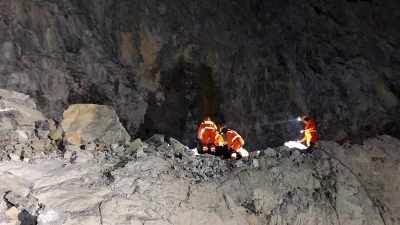📣 For more lifestyle news, click here to join our WhatsApp Channel and also follow us on Instagram
After the violence: Why justice often fails acid-attack survivors in India
For acid attack survivors to get government help, the law must therefore take into account the impact of facial and functional disfigurement, rather than relying solely on percentage-based criteria.
 A crucial turning point in India’s legal response came with the 2013 Supreme Court judgment Laxmi vs Union of India, which, for the first time, acknowledged the necessity of regulating acid sales and ensuring rehabilitation for survivors through directives in 2013 and 2015 . (Credit/Pixabay)
A crucial turning point in India’s legal response came with the 2013 Supreme Court judgment Laxmi vs Union of India, which, for the first time, acknowledged the necessity of regulating acid sales and ensuring rehabilitation for survivors through directives in 2013 and 2015 . (Credit/Pixabay)By Sahira Singh
Acid attacks in India persist despite the country’s economic and social development. Each year, hundreds of cases are recorded — as per National Crime Records Bureau-based summaries, 244 in 2017; 240 in 2019; 182 in 2020; 176 in 2021; 202 in 2022, and 207 in 2023 — with a mostly consistent trajectory. Independent organisations and international estimates suggest many cases go unreported.
Regional studies reveal Uttar Pradesh to be among the states where incidences are persistently high, in fact among the highest in the country. In rural areas of the state, these attacks play out in a setting of limited local resources, patriarchal power imbalances and weak access to justice.
These attacks attempt to strip women of what they consider a very valuable asset — their physical appearance — apart from causing life-long physical disability, disfigurement, visual impairment and severe psychological trauma. In patriarchal societies, a woman’s external appearance is considered far more valuable than any other quality.
In acid attack cases, the horror is not only the physical and mental damage they cause, but also in the silence that follows. Acid attacks cause lifelong trauma, with the impact worsened and continued by society’s reactions to the victims. The ostracisation and isolation that follow become part of the trauma that continues long after the physical wounds heal. There is also continued intimidation by the perpetrators of the crime, which these women face with strength and courage.
Acid attacks are prosecuted under Section 124 of the Bharatiya Nyaya Sanhita , which replaced the 326A and 326B provisions of the Indian Penal Code. Despite the existence of a robust legal and policy framework, government advisories on free treatment and victim compensation schemes, survivors continue to face systemic neglect and procedural delays.
A crucial turning point in India’s legal response came with the 2013 Supreme Court judgment Laxmi vs Union of India, which, for the first time, acknowledged the necessity of regulating acid sales and ensuring rehabilitation for survivors through directives in 2013 and 2015 . The Court ordered that over-the-counter acid sales be restricted and that each victim from the appropriate state or Union Territory get a minimum of Rs 3 lakh in compensation, with Rs 1 lakh within 15 days of the incident and the balance within two months.
This ruling was a significant step in establishing legal guidelines for prevention, treatment, and compensation as well as in acknowledging the state’s obligation to survivors.
However, the author’s research project found that many survivors do not receive the required compensation due to a lack of enforcement. The responsibility for providing compensation is under state victim-compensation schemes framed under CrPC Section 357A and administered through State Legal Services Authorities, with model guidance from the National Legal Services Authority (NALSA)
However, despite NALSA administering legal aid and victim-compensation schemes, providing compensation is often hindered by delayed or absent budget sanctions at the state level. In many cases, funds put aside for survivor compensation are not released on time, or not at all, leading to significant delay for survivors who are already in urgent need of medical care and financial support.
Another support provision that fails due to form over ground reality is within the Rights of Persons with Disabilities Act, 2016. Here, acid-attack survivors are a specified disability category; benefits attach to a benchmark disability of 40 per cent or more, assessed on functional impairment rather than percentage of skin area burned. In practice, it means that a survivor qualifies for state help only with over 40 per cent skin burns.
However, most acid attack survivors do not meet this technical threshold. Their injuries are often concentrated on the face, neck, and arms, causing severe facial disfigurement and, in most cases, partial vision loss. While these may not constitute 40% burns by surface area, the resulting disability, both physical and social, is profound.
For acid attack survivors to get government help, the law must therefore take into account the impact of facial and functional disfigurement, rather than relying solely on percentage-based criteria. Recognising facial disfigurement as a form of disability would ensure survivors receive the same rights to compensation, rehabilitation, and employment protection as others with more measurable impairments.
Interviews with survivors reveal a strikingly repetitive pattern — stories that begin with rejection or jealousy that escalate to extreme violence. The attacks are consistently followed by difficulty receiving or total denial of free medical care that is constitutionally guaranteed, delayed or blocked First Information Reports, trials that drag on, and lacking, if any, compensation. Most survivors face complete exclusion from employment and social life. relying heavily on civil society organisations for recovery and livelihood.
This persistent gap between legal protection and real justice shows that deterrence alone is insufficient; unless Supreme Court rulings and legislation and welfare schemes are actively enforced, rights remain symbolic rather than substantive.
Perpetrators of these attacks act with the awareness that after the act itself, society will continue to punish the survivor by isolating her, rejecting her, and forcing her to live a life of shame. In this way, society actually enables these attacks. Dismantling these structures and dispelling this shame should be a central priority.
The research shows the important role of civil society organisations. They can take the lead in conducting outreach and sensitisation programs that challenge the patriarchal stereotypes surrounding survivors and promoting acceptance of survivors as capable and empowered individuals. They can also build awareness at the block and panchayat levels as to what the true punishment for acid attack perpetrators is, and what the rights of the victims are.
A positive representation in the media can also help widen the public’s acceptance of survivors, and it also helps provide them with positive role models that strengthen their own self-confidence and provide guidance and hope. During interactions, they expressed the wish to be seen not as victims of patriarchal violence, but as champions who have overcome unimaginable trauma with resilience and dignity. This is what one woman said: “Don’t call us survivors, call us champions.”
( Sahira Singh is a student based in Delhi. The article is excerpted from her research project)
📣 For more lifestyle news, click here to join our WhatsApp Channel and also follow us on Instagram






- 01
- 02
- 03
- 04
- 05





















